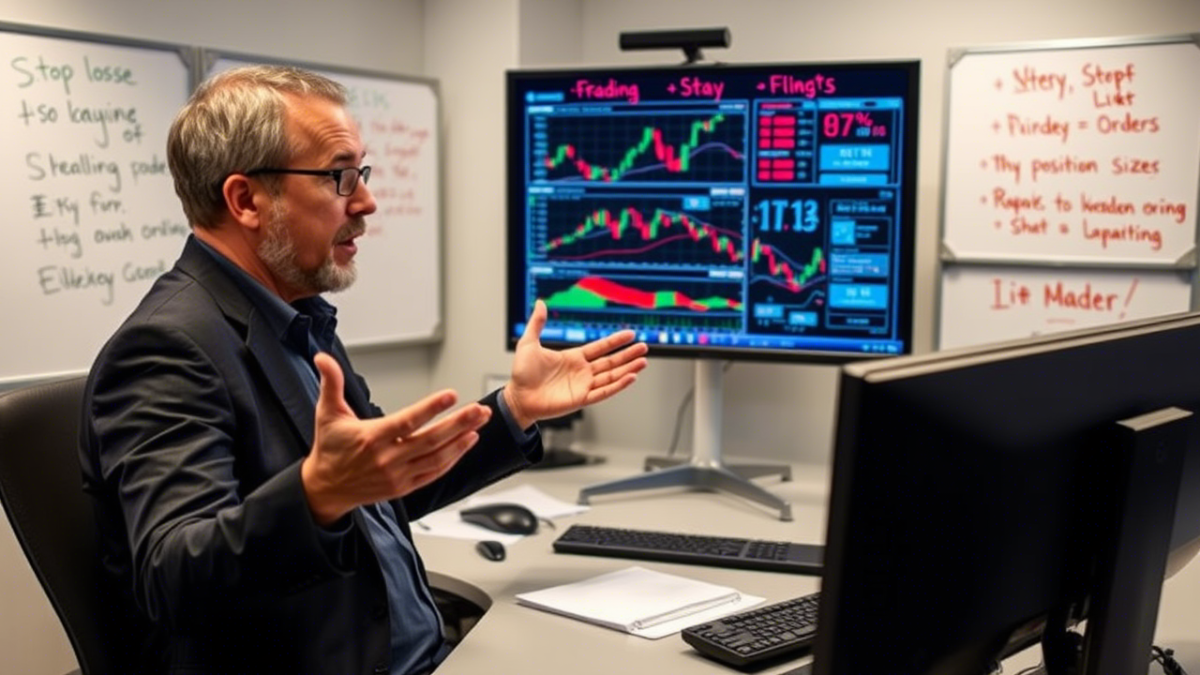FOMO (Fear of Missing Out) is one of the most dangerous emotions in trading. It drives impulsive decisions, such as chasing price spikes, overtrading, or abandoning strategies at the worst possible moment. For day traders, FOMO can turn profitable systems into losing ones—and wipe out accounts in minutes.
The good news? Automation offers a solution. By leveraging mathematics, predefined strategies, and systematic execution, traders can eliminate emotional interference and stay focused on long-term success.
In this article, we’ll break down why FOMO destroys trading accounts, how to avoid it, and why automation is the ultimate antidote.
What is FOMO in Trading?
FOMO occurs when traders feel pressured to act because they believe others are profiting from a move they’re missing. Common FOMO-driven behaviors include:
- Panic buying/selling : Jumping into trades during extreme volatility (e.g., news events, social media hype).
- Overtrading : Taking excessive positions to “catch up” after losses.
- Ignoring stop-losses : Holding losing trades hoping for a reversal.
- Chasing “guaranteed” opportunities : Falling for pump-and-dump schemes or untested “hot tips.”
Example : Buying a currency pair at its peak during a Reddit-fueled rally, only to watch it crash moments later.

Why FOMO Leads to Losses
1. Emotional Decisions Override Logic
FOMO bypasses rational analysis. Instead of following a strategy, traders react to fear (“I’ll miss out!”) or greed (“This could double my account!”).
2. Poor Timing
Trades executed in a FOMO-driven frenzy often occur at market extremes—right before reversals.
3. Overleveraging
Traders may risk far more than their strategy allows, amplifying losses when the market turns.
4. Eroded Discipline
One FOMO trade can snowball into a cycle of emotional trading, breaking confidence in your system.
The Solution: Automate Your Trading
Automation removes emotion from the equation. By coding your strategy into algorithms or using tools like Expert Advisors (EAs), you ensure trades execute only when predefined conditions are met.
How Automation Combats FOMO
- No impulsive entries/exits : Trades are triggered by math, not emotions.
- Consistent risk management : Position sizes, stop-losses, and take-profits are fixed in advance.
- Backtested reliability : Strategies are validated with historical data, reducing guesswork.
Example : An automated scalping system that only opens trades during low-volatility London session hours, ignoring sudden news-driven spikes.
How to Automate Your Trading (Step-by-Step)
1. Define Your Strategy
- Rules-Based : Your strategy must have clear entry/exit criteria (e.g., moving average crossovers, RSI thresholds).
- Risk Parameters : Specify position sizing (e.g., 1% of account per trade) and stop-loss placement.
2. Choose Automation Tools
- Platforms : MetaTrader 4/5 (for EAs), TradingView (for alerts), or Python-based algo trading (for advanced users).
- Brokers : Ensure your broker supports automated trading and offers low-latency execution.
3. Backtest Rigorously
Test your strategy on historical data to identify strengths and weaknesses. Adjust parameters to improve performance.
4. Start Small
Run your automated system on a demo account or with micro-lots to validate its effectiveness in real-time markets.
5. Monitor and Optimize
Regularly review performance metrics (win rate, drawdown, Sharpe ratio) and refine your algorithm as market conditions evolve.

Best Tools for Trading Automation
- MetaTrader EAs : Code custom scripts or purchase pre-built EAs for forex, indices, or commodities.
- TradingView Alerts : Set automated notifications for price levels or indicator signals.
- Python Libraries : Use
ccxt,pandas, andnumpyto build custom bots for crypto or forex. - Copy Trading Platforms : Mirror successful traders’ strategies (e.g., eToro, ZuluTrade).
Tips to Avoid FOMO (Even with Automation)
- Disable Notifications : Turn off price alerts and social media feeds during off-hours.
- Stick to Your Plan : Never override your automated system unless it’s malfunctioning.
- Focus on Long-Term Metrics : Judge success by monthly returns, not individual trades.
- Educate Yourself : Learn to code or partner with a developer to refine your algorithms.
Automation ≠ Guaranteed Profits
While automation minimizes emotional errors, no system is foolproof. Markets evolve, and strategies require constant adaptation. Always:
- Backtest relentlessly .
- Risk only what you can afford to lose .
- Stay disciplined —even when automation is handling the heavy lifting.
Call to Action
Ready to eliminate FOMO and trade like a machine? Start by documenting your strategy, testing it thoroughly, and exploring automation tools. Share your experiences or questions below—let’s build a community of disciplined traders!
Disclaimers
- Not Financial Advice : This article reflects personal strategies and is for educational purposes only.
- High Risk : Trading carries inherent risks. You may lose some or all of your capital.
- Do Your Own Research : Always validate strategies and tools independently.
